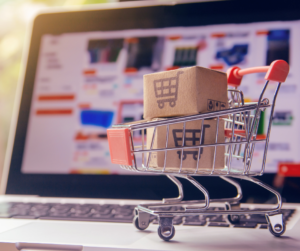In today’s rapidly changing business landscape, procurement has transcended its traditional role to become a strategic cornerstone of organisational success. A pivotal force driving this transformation is electronic procurement, or e-procurement, which has ushered in a new era of efficiency, transparency, and cost-effectiveness. In this article, we delve into the realm of e-procurement and explore its profound impact on modern business practices in the United Kingdom.

E-Procurement: Unveiling the Concept
E-procurement refers to the digitalization of procurement processes, including sourcing, purchasing, invoicing, and supplier management, through the use of electronic systems and technology. It encompasses a range of tools and platforms designed to streamline and enhance the entire procurement lifecycle.
The Key Components of E-Procurement
- E-Sourcing: E-sourcing platforms enable organisations to identify, evaluate, and collaborate with suppliers online. These tools empower procurement professionals to solicit bids, negotiate contracts, and make more informed supplier selections, ultimately leading to cost savings and improved supplier relationships.
- E-Purchasing: E-purchasing solutions facilitate the electronic ordering and procurement of goods and services. This eliminates manual paperwork, reduces errors, and ensures
compliance with procurement policies. It also offers real-time access to catalogues and pricing information, making it easier to track expenses and enforce budget controls. - E-Invoicing: E-invoicing replaces traditional paper-based invoicing with electronic counterparts. This not only reduces administrative burdens but also accelerates the invoice approval process. It enhances accuracy and transparency, minimising the risk of errors and fraud.
- E-Contract Management: E-contract management tools centralise contract storage, automate contract creation, and facilitate compliance monitoring. They ensure that organisations adhere to contractual agreements and can quickly identify and address potential breaches or discrepancies.
- E-Payment: E-Payment solutions are fast, prompt, can be timed that negate the need for cash or cheque. Increases transparency, auditability whilst increasing efficiency and quicker supply of goods/services in some cases.
The Advantages of E-Procurement
E-procurement offers a multitude of benefits that are reshaping how organisations in the UK approach procurement:
- Enhanced Efficiency: E-procurement streamlines processes, reducing the time and effort required for procurement tasks. It minimises manual data entry, approval delays, and document handling.
- Cost Savings: By automating procurement processes, e-procurement helps organisations negotiate better terms with suppliers, reduce operational costs, and eliminate unnecessary spending.

- Improved Supplier Relationships: E-sourcing and collaborative platforms foster stronger ties with suppliers by enhancing communication and transparency. This leads to better supplier performance and more favourable terms.
- Data-Driven Decision-Making: E-procurement systems provide access to real-time data and analytics, enabling procurement professionals to make informed decisions and identify areas for improvement.
- Compliance and Risk Mitigation: E-procurement tools enforce compliance with procurement policies and regulations, reducing the risk of non-compliance and associated penalties.
- Sustainability: E-procurement can support sustainability goals by providing visibility into the environmental and ethical credentials of suppliers and products.

Challenges and Considerations
While e-procurement offers numerous advantages, it also presents challenges such as implementation costs, resistance to change, and cybersecurity concerns. Organisations must carefully evaluate their specific needs, budget, and readiness before transitioning to e-procurement.
Conclusion
E-procurement is a transformative force reshaping the landscape of procurement in the UK. It empowers organisations to enhance efficiency, reduce costs, strengthen supplier relationships, and make data-driven decisions. As digitalisation continues to pervade business processes, e-procurement is not just a strategic choice but a necessary step for organisations seeking to thrive in the digital age. Those who embrace e-procurement will find themselves better equipped to navigate the ever-evolving procurement landscape and achieve lasting success.





































